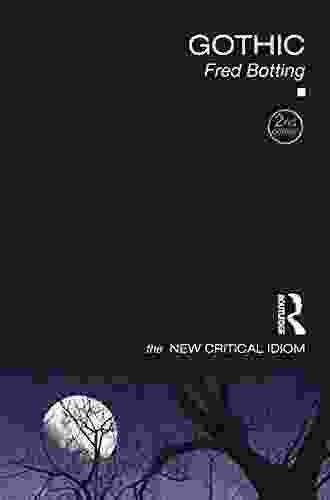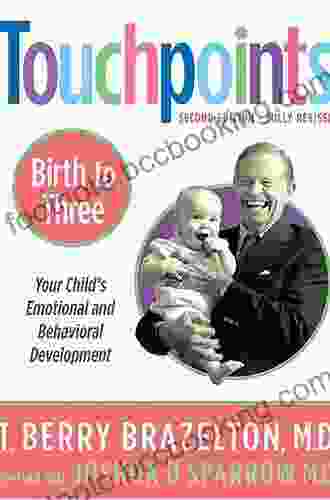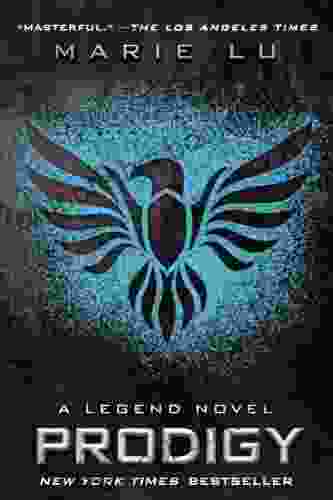Gothic: The New Critical Idiom

By [Author's Name]
Gothic literature is a genre that has been captivating readers and critics alike for centuries. Its dark and atmospheric tales of horror, the supernatural, and the macabre have proven to be both timeless and endlessly fascinating. In recent years, there has been a renewed interest in Gothic literature, as scholars and critics have sought to explore the genre's relevance to contemporary culture and society.
Gothic: The New Critical Idiom is an essential guide to this exciting and ever-evolving field of study. This comprehensive text provides a fresh perspective on the history of Gothic literature, its key themes, and its critical reception. Written by a team of leading scholars, Gothic: The New Critical Idiom is an indispensable resource for anyone interested in this enduring literary tradition.
4.3 out of 5
| Language | : | English |
| File size | : | 941 KB |
| Text-to-Speech | : | Enabled |
| Screen Reader | : | Supported |
| Enhanced typesetting | : | Enabled |
| Word Wise | : | Enabled |
| Print length | : | 242 pages |
The book is divided into three parts. The first part, "Origins and Evolution," traces the history of Gothic literature from its beginnings in the 18th century to its modern manifestations. The second part, "Key Themes," explores the genre's most important themes, including darkness, death, decay, melancholy, alienation, fear, anxiety, madness, monstrosity, the uncanny, otherness, transgression, subversion, and critique. The third part, "Critical Reception," examines the ways in which Gothic literature has been interpreted and evaluated by critics over the years.
Gothic: The New Critical Idiom is a groundbreaking work that will appeal to a wide range of readers, including students, scholars, and general readers. It is a must-read for anyone interested in Gothic literature, horror fiction, or the history of literature.
Gothic Literature: A Brief History
Gothic literature emerged in the 18th century as a reaction to the Enlightenment's emphasis on reason and Free Download. Gothic writers sought to explore the darker side of human nature, and their works often featured themes of horror, the supernatural, and the macabre. Some of the most famous Gothic novels include Horace Walpole's The Castle of Otranto (1764),Ann Radcliffe's The Mysteries of Udolpho (1794),and Mary Shelley's Frankenstein (1818).
Gothic literature continued to be popular in the 19th century, with authors such as Edgar Allan Poe, Nathaniel Hawthorne, and Bram Stoker producing some of the genre's most iconic works. In the 20th century, Gothic literature experienced a revival, with authors such as Shirley Jackson, Stephen King, and Anne Rice exploring the genre's potential for social and political commentary.
Key Themes of Gothic Literature
Gothic literature is characterized by a number of key themes, including:
- Darkness: Gothic literature is often set in dark and atmospheric places, such as castles, dungeons, and forests. This darkness can be both physical and psychological, reflecting the characters' inner fears and anxieties.
- Death: Death is a central theme in Gothic literature. Gothic characters are often haunted by the deaths of loved ones, or by their own mortality. Death can also be a source of terror, as it represents the unknown and the inevitable.
- Decay: Gothic literature often features images of decay and ruin. This can be seen in the crumbling castles and overgrown gardens that are often used as settings for Gothic stories. Decay can also be a metaphor for the decline of society or the human soul.
- Melancholy: Gothic characters are often melancholy and introspective. They may be alienated from society or from themselves. Melancholy can lead to madness, despair, or even death.
- Alienation: Gothic characters are often alienated from society or from themselves. They may be outcasts or loners, or they may simply feel like they don't belong. Alienation can lead to loneliness, isolation, and despair.
- Fear: Gothic literature is full of fear and anxiety. Characters are often afraid of the unknown, of the supernatural, or of themselves. Fear can be a paralyzing force, or it can drive characters to do desperate things.
- Anxiety: Gothic characters are often anxious about the future. They may be worried about their own safety or the safety of their loved ones. Anxiety can lead to paranoia, obsession, or even madness.
- Madness: Madness is a common theme in Gothic literature. Characters may go mad from grief, fear, or despair. Madness can be a terrifying experience, or it can be a way of escaping reality.
- Monstrosity: Gothic literature often features monsters or other creatures that are seen as unnatural or threatening. These monsters can be physical or psychological, and they can represent the characters' own fears and anxieties.
- The Uncanny: The uncanny is a sense of strangeness or unease that is often found in Gothic literature. The uncanny can be caused by something that is familiar but somehow different, or by something that is completely unknown. The uncanny can be a source of fear or fascination, or it can simply be a reminder of the fragility of our own sanity.
- Otherness: Gothic literature often explores the theme of otherness. This can be seen in the characters who are different from the norm, or in the settings that are strange and unfamiliar. Otherness can be a source of fear or fascination, or it can simply be a reminder of the diversity of human experience.
- Transgression: Gothic literature often features characters who transgress social or moral boundaries. This can be seen in the characters who commit crimes or who engage in forbidden activities. Transgression can be a source of fear or excitement, or it can simply be a way of challenging the status quo.
- Subversion: Gothic literature often subverts traditional literary conventions. This can be seen in the use of unreliable narrators, in the blurring of genres, or in the questioning of social norms. Subversion can be a source of humor or horror, or it can simply be a way of challenging the reader's expectations.
- Critique: Gothic literature often critiques social and political institutions. This can be seen in the characters who are victims of injustice or oppression, or in the settings that are characterized by poverty or corruption. Critique can be a source of anger or despair, or it can simply be a way of raising awareness of social problems.
Critical Reception of Gothic Literature
Gothic literature has been the subject of much critical debate over the years. Some critics have argued that Gothic literature is a valuable form of art that can explore the darker side of human nature and provide social commentary. Others have argued that Gothic literature is simply escapist entertainment that glorifies violence and the macabre.
In recent years, there has been a renewed interest in Gothic literature, as scholars and critics have sought to explore the genre's relevance to contemporary culture and society. Gothic literature has been used to explore issues such as race, gender, class, sexuality, and the environment. It has also been used to critique social and political institutions, and to provide a voice for the marginalized and the oppressed.
Gothic literature is a complex and multifaceted genre that has been captivating readers and critics alike for centuries. Its dark and atmospheric tales of horror, the supernatural, and the macabre have proven to be both timeless and endlessly fascinating. Gothic literature continues to be relevant today, as it provides a way to explore the darker side of human nature and to critique social and political institutions.
Gothic: The New Critical Idiom is an essential guide to this exciting and ever-evolving field of study. This comprehensive text provides a fresh perspective on the history of Gothic literature, its key themes, and its critical reception. Written by a team of leading scholars, Gothic: The New Critical Idiom is an indispensable resource for anyone interested in this enduring literary tradition.
4.3 out of 5
| Language | : | English |
| File size | : | 941 KB |
| Text-to-Speech | : | Enabled |
| Screen Reader | : | Supported |
| Enhanced typesetting | : | Enabled |
| Word Wise | : | Enabled |
| Print length | : | 242 pages |
Do you want to contribute by writing guest posts on this blog?
Please contact us and send us a resume of previous articles that you have written.
 Book
Book Novel
Novel Page
Page Chapter
Chapter Text
Text Story
Story Genre
Genre Reader
Reader Library
Library Paperback
Paperback E-book
E-book Magazine
Magazine Newspaper
Newspaper Paragraph
Paragraph Sentence
Sentence Bookmark
Bookmark Shelf
Shelf Glossary
Glossary Bibliography
Bibliography Foreword
Foreword Preface
Preface Synopsis
Synopsis Annotation
Annotation Footnote
Footnote Manuscript
Manuscript Scroll
Scroll Codex
Codex Tome
Tome Bestseller
Bestseller Classics
Classics Library card
Library card Narrative
Narrative Biography
Biography Autobiography
Autobiography Memoir
Memoir Reference
Reference Encyclopedia
Encyclopedia Karin Perry
Karin Perry Stephen Haff
Stephen Haff Joseph Nocera
Joseph Nocera Gail Jarrow
Gail Jarrow Frank J Fabozzi
Frank J Fabozzi Lisa Schirch
Lisa Schirch Jeanne Cooper
Jeanne Cooper Erika V Shearin Karres
Erika V Shearin Karres Francis Parkman
Francis Parkman Frances Fuller
Frances Fuller Francis K O Yuen
Francis K O Yuen Forrest Maready
Forrest Maready Jonathan Gelber M D M S
Jonathan Gelber M D M S Jesse Vint
Jesse Vint Fred Rosen
Fred Rosen Larry Lerner
Larry Lerner Forrest Cole
Forrest Cole Frankie Gaw
Frankie Gaw Stephanie Rose
Stephanie Rose Florencia E Mallon
Florencia E Mallon
Light bulbAdvertise smarter! Our strategic ad space ensures maximum exposure. Reserve your spot today!
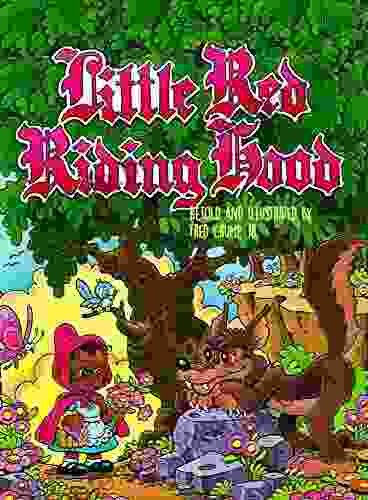
 James HayesLittle Red Riding Hood Retold: A Timeless Classic Reinvented for the Modern...
James HayesLittle Red Riding Hood Retold: A Timeless Classic Reinvented for the Modern... Barry BryantFollow ·8.2k
Barry BryantFollow ·8.2k Harold PowellFollow ·2.1k
Harold PowellFollow ·2.1k Pat MitchellFollow ·5.2k
Pat MitchellFollow ·5.2k Garrett BellFollow ·8k
Garrett BellFollow ·8k Arthur C. ClarkeFollow ·2.2k
Arthur C. ClarkeFollow ·2.2k Michael CrichtonFollow ·5k
Michael CrichtonFollow ·5k José SaramagoFollow ·6.6k
José SaramagoFollow ·6.6k Brandon CoxFollow ·2.4k
Brandon CoxFollow ·2.4k

 Howard Blair
Howard BlairHeroes and Villains from American History: The Biography...
David Dixon...

 Felipe Blair
Felipe BlairAn Informal History of the 1920s: Uncovering the Roaring...
The 1920s, an era...

 Howard Blair
Howard BlairHow a Peculiar Victorian Zookeeper Waged a Lonely Crusade...
In the enigmatic world of Victorian...
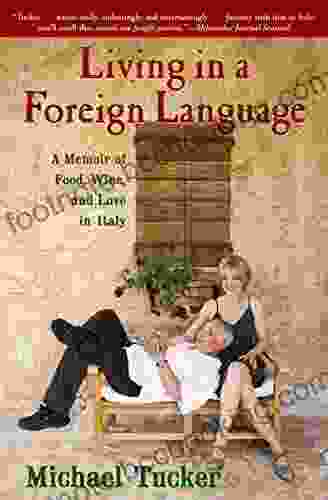
 Harold Powell
Harold PowellMemoir of Food, Wine, and Love in Italy: A Culinary...
Prepare your senses...
4.3 out of 5
| Language | : | English |
| File size | : | 941 KB |
| Text-to-Speech | : | Enabled |
| Screen Reader | : | Supported |
| Enhanced typesetting | : | Enabled |
| Word Wise | : | Enabled |
| Print length | : | 242 pages |


